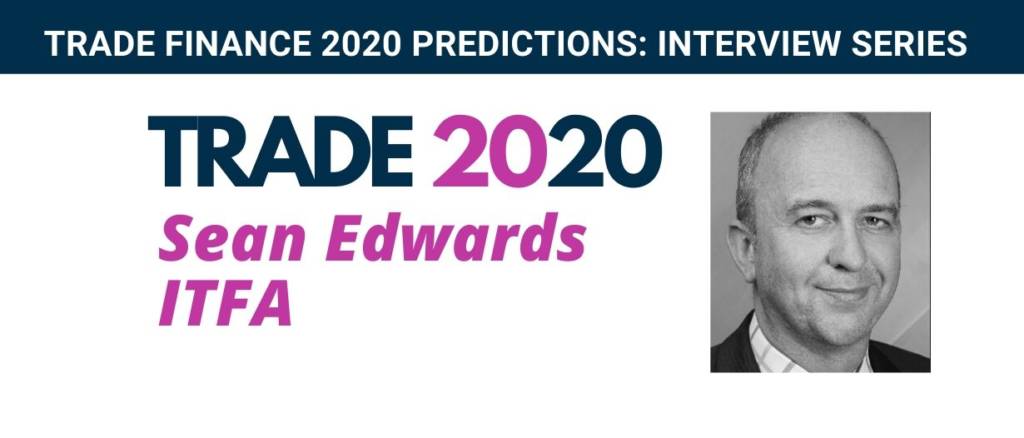TFG heard exclusively from José Manuel Campa, Chairperson, European Banking Authority on the key initiatives taken by the banking sector to support the economy post-Covid such as technology and innovation in banks and prevention of financial crime.
Featuring: José Manuel Campa (JC), Chairperson, European Banking Authority
Host: Deepesh Patel (DP), Editor, Trade Finance Global
Deepesh Patel (DP): Thank you so much for doing this with us! What is your “backstory”? Tell us a little more about your role as Chairman of the European Banking Authority.
José Manuel Campa (JC): My role as Chairperson of the EBA is to steer the organisation, jointly with the Board of Supervisors, on the policy agenda within the EU banking sector. This primarily involves assuring a single rulebook across the EU, preserving the well-functioning of the single market for banking and payment services, and overseeing any potential risks to financial stability. We work a lot with national supervisory authorities in these areas and also actively engage with the industry, consumers and other stakeholders to make sure that we effectively pursue our mission.
My background comes from a mix of professional experiences. For many years I was an academic engaging in research related to global financial markets and in particular financial integration in Europe. I have also served as Secretary of State for economic affairs for the Government of Spain during the global financial crises and have worked for a major European bank. In that sense, I had the opportunity to assess some of the salient issues for the European banking sector from different perspectives and currently to serve as Chairperson of the EBA is a real honor.

DP: What is the role of the European Banking Authority and why is a single supervisory and regulatory framework for the entire banking sector in Europe important?
JC: In many aspects, finance and international banking is a global industry. Access to markets, common regulation and level playing field are fundamental for having an effective and competitive financial market. In Europe, the majority of financial intermediation is performed by banks, and the single regulatory framework is the basic building block in which the single market for banking services operates in the EU.
On top of that, having a similar approach, and good cooperation, by all supervisors within the EU provides an additional guarantee that the rules are applied in a fair and consistent manner. Finally, if we have an efficient single market for banking services, we can assure that we can provide the financing to our citizens and our companies to support growth.
Celebrating its 10th year, City Week is the premier gathering of the international financial services community.

Basel III and the Capital Requirements Regulation (CRR) and Directive (CRD)
DP: Basel III underpins the Capital Requirements Regulation (CRR) and Directive (CRD). Yet we too often hear from banks that SMEs are worse off as a result of these rules, despite their aim to boost financial stability and systemic resilience. What are your thoughts on this?
JC: I also hear these stories, but I have not yet seen convincing evidence to support this. Generally, SMEs enjoy a preferential status in most of the prudential rules currently in place. Banks are required to set aside lower capital requirements for their exposures to SMES than compared to non-SME corporates and the new Basel III rules have also lowered such requirements and I think we have found a good balance.
Basel Reform?
DP: Are there any aims to reform Basel rules in the mid to long-term future?
JC: Our main focus now should be to implement the Basel framework in the EU. This framework is of a more structural nature and enhances the existing regulation by bringing about more risk sensitivity, and replacing some parts of it, such as the market risk regime, that proved inadequate during the global financial crisis. Overall, the new framework has been a major improvement.
It is, nonetheless, clear that the COVID-19 pandemic has served as a stress test of the system. Like any crisis is a good opportunity to reflect, learn what has worked well and what may need improvements, and extract lessons for the future. The usability of the different capital buffers that are currently in the regulation is one of those areas. However, at this moment my impression is that we would only be talking about a fine-tuning of the Basel framework, as the overall design has proven robust and should remain unchanged.
Testing the banks’ capital positions post financial crisis
DP: What has the EBA been doing to ensure banks have strengthened their capital position since the 2008 financial crisis?
JC: Since the great financial crisis, European banks have substantially strengthened their capital positions. The Common Equity Tier 1 (CET1) ratio rose from an average of 9% in 2009 to nearly 15% in Q4 2019. It is not only the quantity of capital, but the quality of capital that has also improved and these has been one of the key areas of focus for the EBA since its inception. Since 2010, the EBA, and its predecessor CEBS, has coordinated and conducted five stress test exercises aimed at assessing the resilience of EU banks to a common set of adverse economic developments. These exercises identified potential risks to the adequacy of capital positions of EU banks, and have been an important supervisory tool and an input for the Pillar 2 capital assessment of banks. Stress test results have led to recommendations to improve banks’ capital positions where weaknesses have been identified.
Covid-19 stress testing – do banks have sufficient liquidity and capital buffers?
DP: The EBA recently delivered a preliminary assessment of the impact of COVID-19. What were the key findings and what are the next priorities as we come out of this pandemic?
JC: EU banks have entered the COVID-19 crisis with relatively sound liquidity and capital buffers. These buffers have been rather resilient in the initial stage of the unfolding crisis. We performed a vulnerability assessment of the status of the banking sector, taking as the initial point the outcome of our latest stress tests in the industry and updating with some additional sensitivities from the impact of COVID-19 and the overall assessment was that the banking sector as a whole could support the expected downturn.
However, the economic downturn has been large and the shape of the recovery remains uncertain. Asset quality is expected to be a key challenge going forward, and EU banks are likely to face growing volumes of NPLs and rising cost of risk. Part of this increase will be compensated by the exceptional measures put forward by national governments via public guarantee schemes. Nevertheless, banks and supervisors should properly assess the quality of loan portfolios taking into account all the support measures and continue to do so as the recovery unfolds.
Overall profitability is an additional key concern for EU banks given that the starting levels of profitability were low, the likely deterioration in asset quality and the further prolonged ‘lower for longer’ interest rate environment.
Finally, the digitalisation and the use of ICT has accelerated during the crisis. It is key for banks and their service providers to carefully manage their ICT and security risks, including when outsourcing ICT activities.
The CRR ‘quick fix’
DP: What was the CRR ‘quick fix’ and how has this helped enhance credit flows to companies during the COVID-19 crisis?
JC: Several elements aimed at enhancing credit flows, mainly by postponing measures that were already in the pipeline, including the treatment of non-performing loans under the so-called prudential backstop and transitional arrangements for the accounting framework. This ensured that banks did not have to worry about implementing these elements in the current situation. The priority for co-legislators was indeed to remove this uncertainty, and as EBA, we have been supportive in this respect.
It is also important to highlight that things are changing fast and the EBA is putting significant effort into the monitoring of the situation. The quick fix is a good example showing that regulators and legislators can act fast, if need be. We will hence continue to monitor. Right now, as I said before, banks have relatively sound capital and liquidity buffers. Nonetheless, high vigilance in the monitoring of developments is clearly needed today and we are very aware of our role in this regard.
DP: Public guarantee schemes have also been crucial in ensuring backstops, government guarantees, and business support during the pandemic. What is the EBA’s role in supporting this?
JC: I should firstly stress that the EBA appreciates the efforts by EU and national governments to support the economy during the pandemic. Getting through the current situation should be the main priority and I see public guarantees as a natural part of this, as they help ensure that funding is provided to firms during these difficult circumstances. There have been a large number of different measures and initiatives at the different levels and it is important that they are properly used.
To ensure transparency in the use of the guarantees, we have conducted a stock-take of the public guarantees and published an overview on our website. This also allows all EU banks to have an overview of the public guarantees which have been put in place. Furthermore, given that the existence of guarantees also has an impact on capital requirements, we support national supervisors in their assessment and proper use by banks. This is also something we are monitoring closely as part of our COVID-19 response.
EBA’s role in fighting financial crime
DP: Fraud and anti-money laundering, particularly in the e-commerce sector have been on the rise since the start of the pandemic. Combating AML and fighting financial crime is particularly important in the trade finance sector. What can the EBA do to reduce this, without burdening banks with excessive controls and KYC requirements that might hinder SME finance?
JC: The EU legislator has given us a legal mandate to lead, coordinate and monitor the EU financial sector’s fight against money laundering and terrorist financing (ML/TF). As part of this, we are working to develop policies and standards on anti-money laundering and countering the financing of terrorism (AML/CFT) and support their effective implementation. Our aim is to foster risk-based approach to AML/CFT that delivers the right outcomes and that includes making sure that what financial institutions do to comply is proportionate and effective.
We have been concerned since the very beginning of the pandemic on the risk of an increase in financial crime. We put out a statement at the beginning of the pandemic, and have followed up with more guidance since, where we set out what we expect supervisors to do to help financial institutions cope with the unprecedented challenges brought about by Covid-19. For example, we made clear that we want supervisors to work with Financial Intelligence Units (FIUs) to identify specific ML/TF risks that have emerged since the start of the pandemic, and to share those risks with their sector.
We have also enhanced our so-called Risk Factors Guidelines, which create a common understanding among AML/CFT supervisors and financial institutions across the EU of the steps financial institutions should take to identify ML/TF risk and the measures they can take to mitigate that risk. Importantly, these guidelines make clear that managing ML/TF risk effectively does not have to be onerous or very costly. The aim is indeed to prevent the abuse of the financial system for ML/TF purposes, not to make life difficult for legitimate customers.
DP: What is next on the agenda for you, in your role as Chairman of the European Banking Authority, in the short to medium-term future?
JC: Going forward closely monitoring the ability of the banking sector to support the economy as the recovery unfolds remains a key priority. In this context, we are currently designing the EBA stress tests that we will be performing in the first half of next year. This exercise will be fundamental in identifying the overall status of the industry, early detection of any vulnerabilities and providing support to supervisors as they monitor the banks.
At the same time, most of the key areas in our regulatory agenda continue to be very relevant. In particular, the regulatory framework on integrating technology and innovation in banks, and pursuing our work on the ESG agenda and prevention of financial crime.































